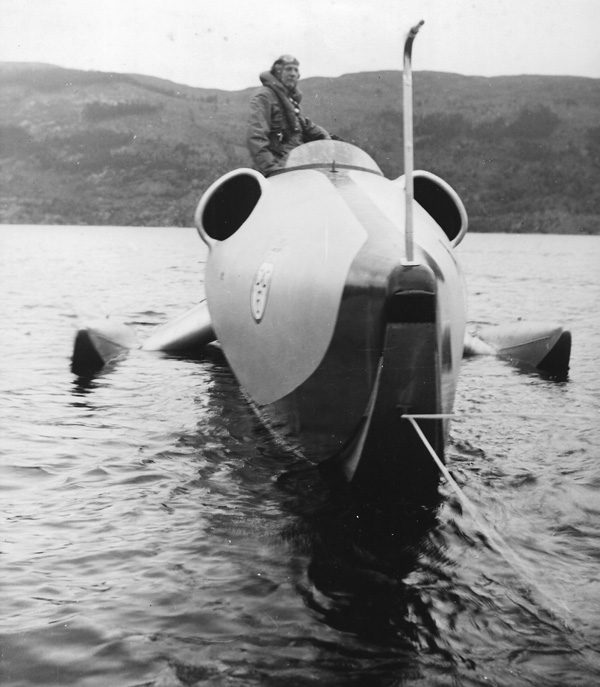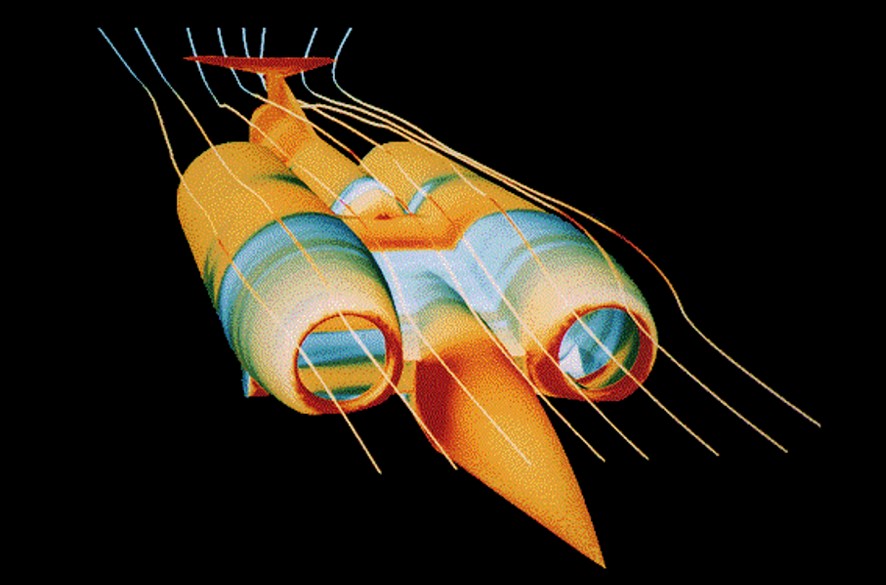HOW IT STARTED

Like so many of my generation I read avidly about the record breakers and the extraordinary achievements of the designers and drivers of the 1920’s 30’s and 40’s. In 1952 I was lucky enough to be given the start because living in Inverness, my Dad decided to take the family for a country drive along Loch Ness and there I saw John Cobb’s Crusader sitting on its transport pallet on Temple Pier at Drumnadrochit. I remember it vividly – the Castrol workshop, the Coles crane and a huge crowd on the road above – just gazing at this amazing red and silver craft which was eventually to peak at 225mph on water. There were models and pictures being exhibited in the shop windows in Inverness – there was massive interest.
Of course all this can lead to an obsession and led directly to Thrust1, Thrust2, Dieselmax and the ThrustSSC supersonic record – and now, Thrust WSH.
As we progressed through our own record projects – new technology began to become available to designers such as CAD, FEA and CFD which made ThrustSSC possible. These technologies give detailed analyses which made design much more of an exact mathematical art.
But how did these early designers cope without these magic tools? The conclusion I came to is that they had extraordinary integration with their projects and such a deep understanding of their materials and engineering, that had they had these wonderful IT tools, they may never have needed them. They could make their judgements with their slide rules and in their heads. And very quickly!


Crusader crashed in September 1952 and John Cobb was killed. We all assumed that the tragedy was one of those awful accidents and the word went around that having lost his good friend the brilliant designer Reid Railton would never design a record breaker again.
In April 2018 the truly magnificent book Reid Railton Man of Speed was published by Evro and we discovered the rest of the Crusader story. Railton was deeply unhappy about the management of the Crusader project and decided to design the second generation record boat, working with his friend and fellow record breaker George Eyston. Everything he had learned from the Crusader project went into this new design which progressed as far as being incorporated into a tank test model built in secret by NPL (pictured here). And there, it seems it stopped because there were no funds available to build the full scale Crusader 2 boat.
SIGN UP
and keep up to speed …
